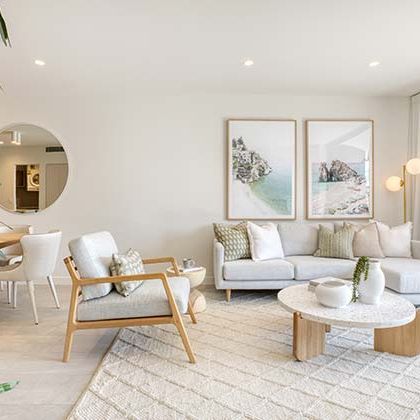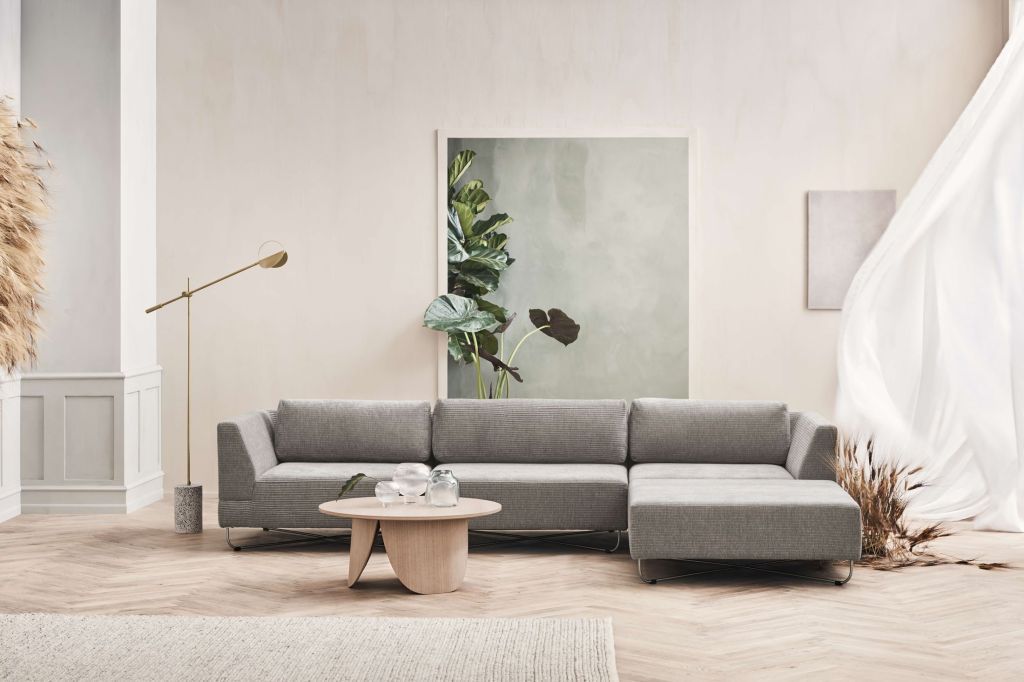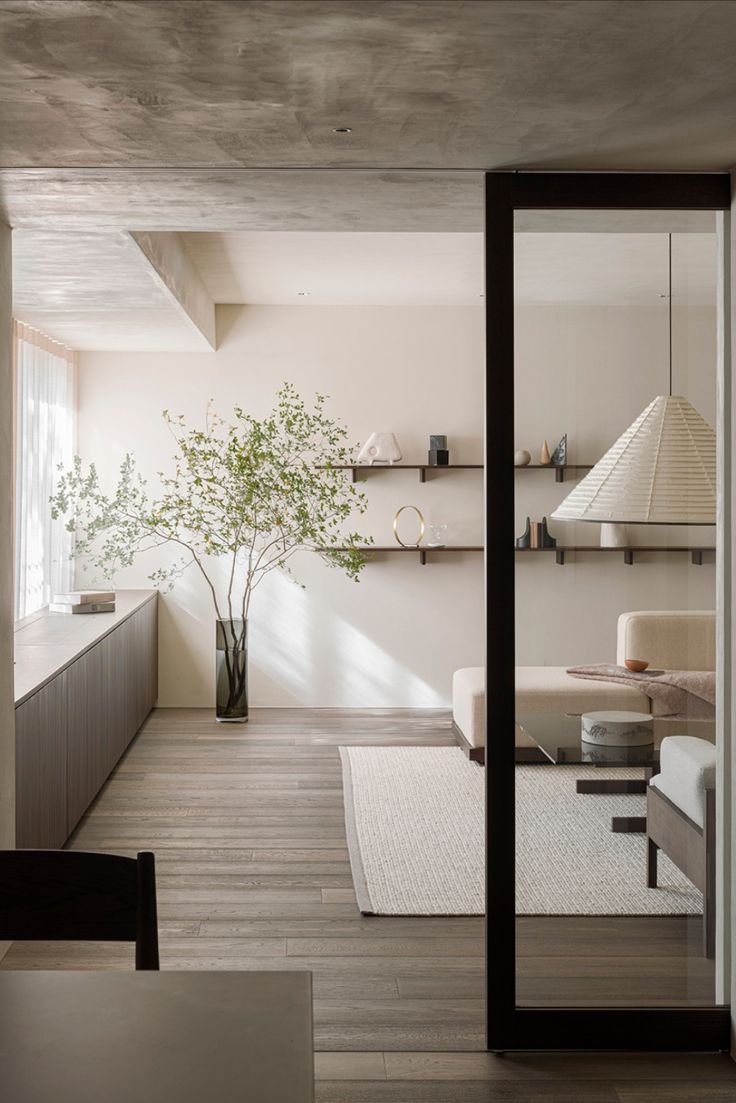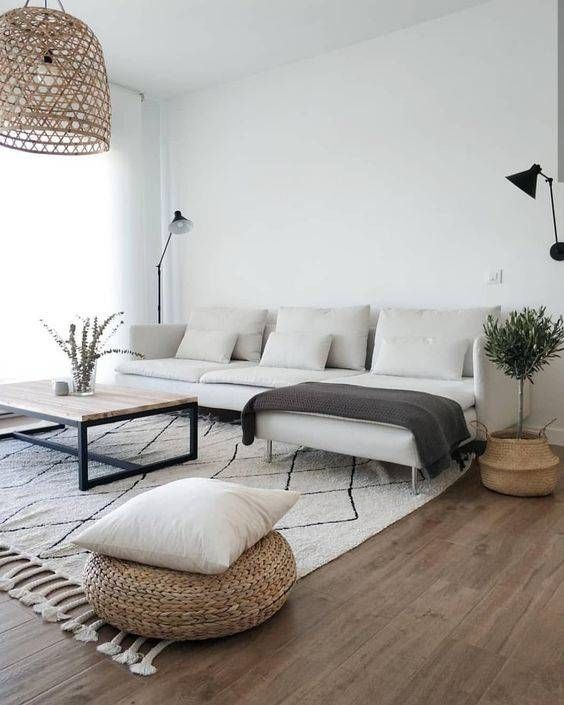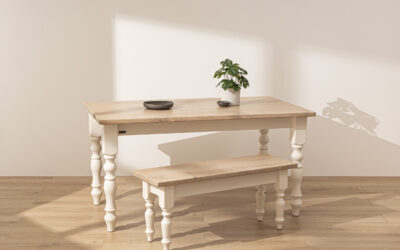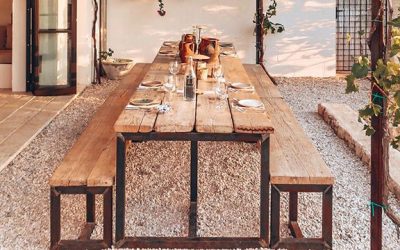Japandi Design – A Detailed Guide
What is Japandi?
Japandi is the latest trend taking the home interiors by storm; where Japanese minimalism fuses with Scandinavian functionality.
Despite Japan and Scandinavia being completely different cultures, they both share the same core design principles. The focus is all about functionality and simplicity, as well as a respect for nature and quality craftsmanship.
Japanese + Scandi = Japandi
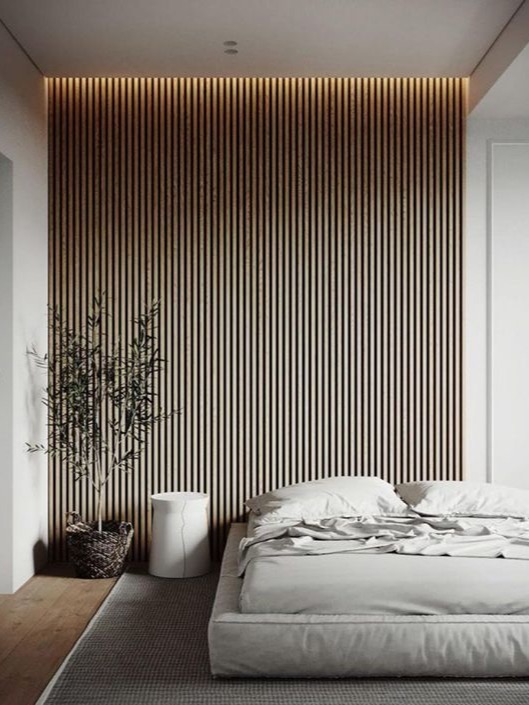
Photo credit: Pinterest @owldesign.co.uk
We have some stunning Japandi Dining Tables that focus on functionality and simplicity
👉 “Japandi Dining Tables“
Japandi is primarily made up of the Scandinavian ‘hygge’, which is about finding pleasures in the simplest of things, and Japan’s ‘wabi-sabi’, which is centered around finding beauty in imperfection.
Hygge is about creating warm spaces that bring people together, with neutral decor and comfortable textures such as blankets and soft pillows. Wabi-sabi is about appreciating the imperfection of things – think rustic furnishings that are original or handmade, and lots of natural plants.
The styles work well together because they are both rooted in minimalism and comfort, bringing a cosy and simplistic look into the home. The rich, yet still neutral, colours used in Japanese design help to keep the stark, crisp palettes of Scandinavian homes from feeling clinical or cold. It’s the ultimate minimalist look.
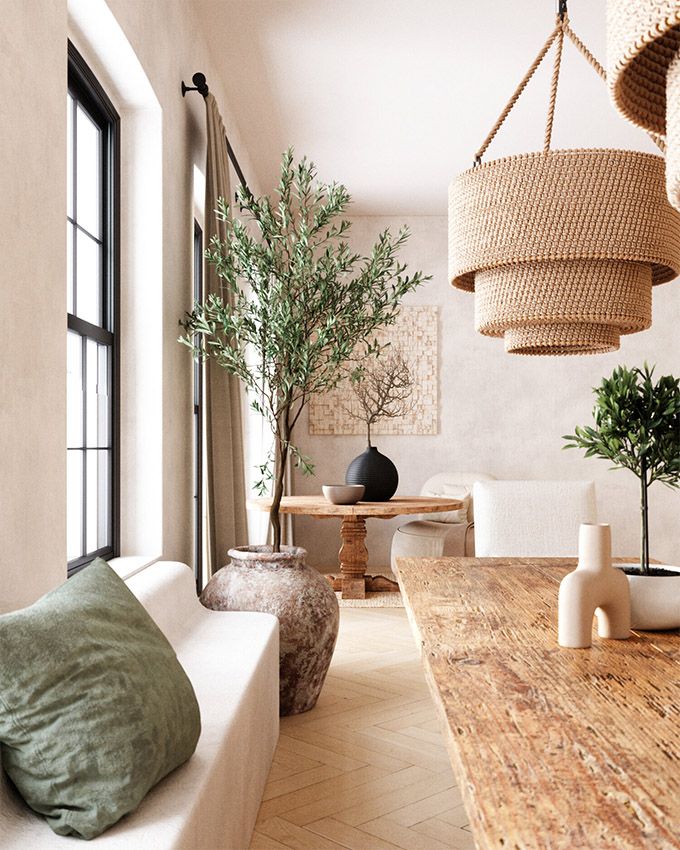
Photo credit: Pinterest @PoshPennies
How can I get Japandi style in my home?
Use a minimalist design
Simple, pared-back designs and natural materials are key characteristics of Japandi, utilising natural materials, muted colours and minimalist furnishings.
Japandi is all about having zero clutter and having a free-flowing space. Less is definitely more to nail this trend, so keep accessories to a minimum. This doesn’t mean you need to live in an empty home. Instead invest your money in high-quality items that are carefully selected and have significant meaning to you.
With less items on show and more emphasis on only having items that you need, you can curate a space that is not beautiful, but functional too.
Photo credit: Pinterest @ElleDecor
Use simple and clean lines
Choose furniture that is low to the ground with clean, simple lines. Low furniture is a great way to make the space free-flowing and creates a relaxed atmosphere. Functionality is also key so furniture that can also double as storage is a great idea. This paired with textured throws and soft furnishings will create a sense of peace and calmness key to the Japandi trend.
Photo credit: Pinterest @KomTerin
Use natural materials
It is important to use natural materials to nail the Japandi interior, as nature is significant in both Scandinavian and Japanese cultures.
Wood is one of the most important materials in achieving this aesthetic, whether it’s through the flooring, furniture or soft furnishings. Bamboo, paper and rattan are other popular natural materials that would also integrate perfectly in a Japandi space.
Think carefully about colour
Japandi is all about neutral colours. For your walls, choose an off-white colour to help reflect daylight through space. For furniture and soft furnishings, choose neutral fabrics like beige, off-white or muted grey and natural wood tones. Keep your palette subdued and accessorise with complementary natural hues such as sky blue, green, browns and other earth tones. You don’t need to be afraid of adding colour, but make sure they are muted tones and invoke a sense of calm and tranquility. Accents of black can also be used to bring the look together.
Photo credit: Pinterest @TheSpaces
Use luxurious textures
The best way to add some warmth and interest to your Japandi interior is to use different textures and fabrics. Cushions and curtains are a great place to start, as well as throws and tableware. The aim is to create a sense of indulgence so think silk, velvet and cashmere.
Accessories are a great way to add texture to your space and can transform a room, whether it’s through mirrors, picture frames, lamps or vases. Choose a few key statement pieces to create the perfect Japandi aesthetic.
Photo credit: Pinterest @Homies
Design around sustainability
Sustainability is at the core of Japandi. The sought-after calm, relaxing interiors rely heavily on the use of natural materials in the styling, such as wood for furniture, bamboo accessories and unbleached natural soft furnishings. It aims to encourage people to use materials that are easy on the environment and easy to recycle, which has a positive impact on the planet.
Japandi is focused on minimalist but functional interiors. It might be tempting to purchase fast fashion items that are on sale, however buying fewer items that are high quality, will last longer and can be passed down to future generations is key.
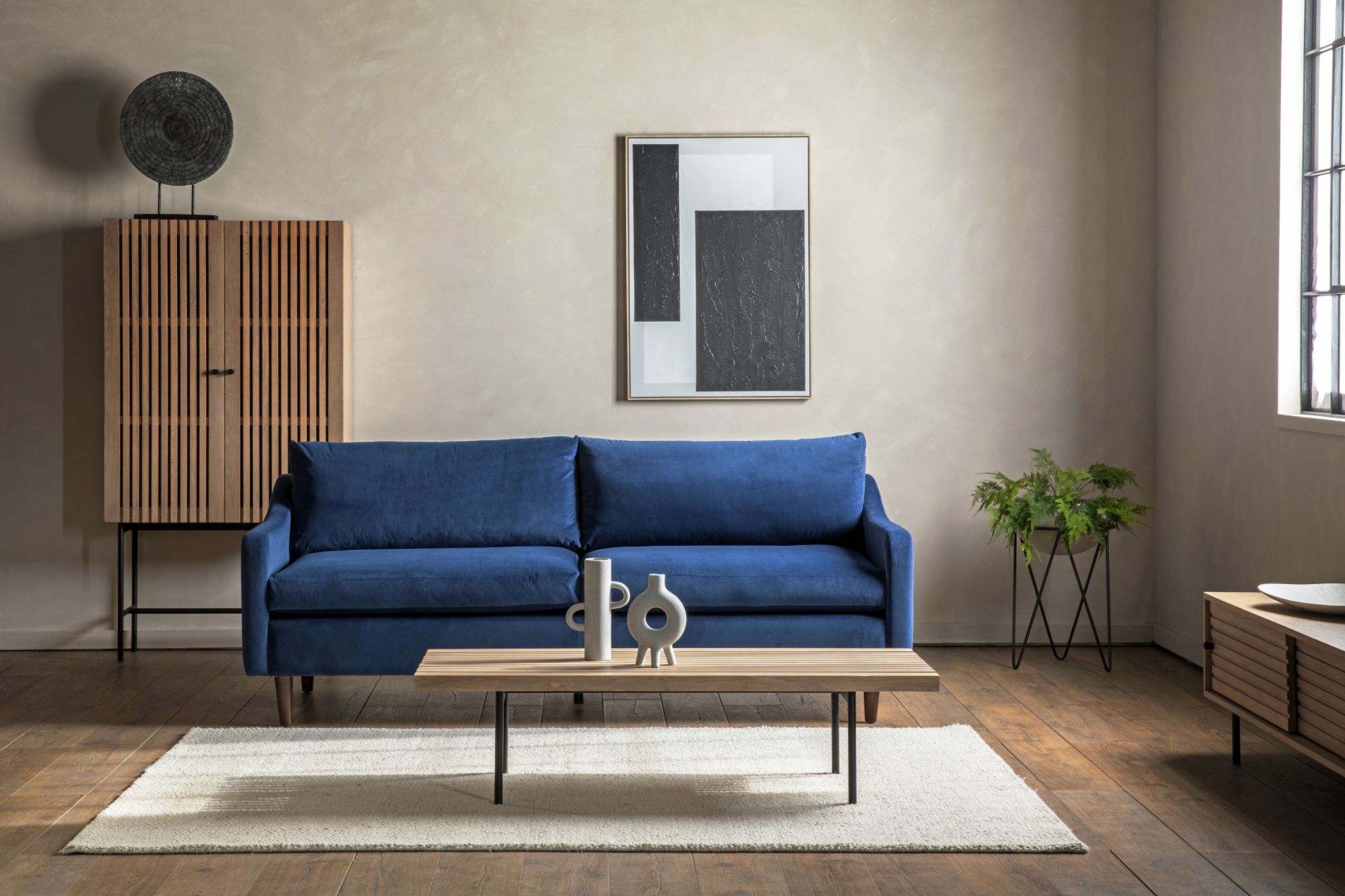
Tokyo Range by Grain and Frame
The best lighting for Japandi design
Lighting is key to achieving the Japandi aesthetic, and the best lighting is natural light. The color scheme of your furniture, walls and floors also plays a large role in the amount of natural light that circulates in the rooms in your home, so ensure you choose neutral, pale tones where possible.
The amount of light that can be let into your space can be limited by its design and the amount of windows you have. If you’re low on natural light, use strategically placed mirrors to help create an illusion of space and help brighten the room. Other highly reflective surfaces, such as polished wood, or polished metallic objects such as door handles, vases or metal coffee tables can also achieve this effect
While natural light should be the focus, it’s important to use soft lighting to complement the natural light. For ceiling lights or floor lamps remember to use natural materials such as brass, metal, paper, rattan or bamboo to complement, rather than overpower, the aesthetic.
Photo credit: Pinterest @Homeplistic
Bring the outdoors in
An important element of Japandi design is to incorporate plants, bringing the outdoors in. Both Japanese and Scandi designs have a strong connection to the environment, so the plants are a great natural accessory to add throughout the home. The pops of green add contrast to the neutral tones and the plants improve air quality too.
Photo credit: Pinterest @CreatePerfect
Choose statement pieces
Japandi is about combining the functional with the beautiful. To achieve the Japandi look, you need to mix the comfort of Scandinavian accessories such as soft cushions and throws, with more utilitarian Japanese elements like striking vases and interesting artwork. Don’t be scared to combine rounded silhouettes with angled ones and varying tones of neutrals with some classic darker wood tones. The key is to identify contrasting items that are harmonious together. If you’re unsure where to start, try working backwards. Place all of your items on a surface and take away items one by one, until you’re left with only what you need in the space.
Photo credit: Pinterest @Reddit
Looking for Japandi Style Furniture?
We have some stunning Japandi furniture ranges that focus on functionality and simplicity, as well as a respect for nature and quality craftsmanship.
So if you want help creating a warm space with beautiful handmade furniture, hit the button below 🙂






